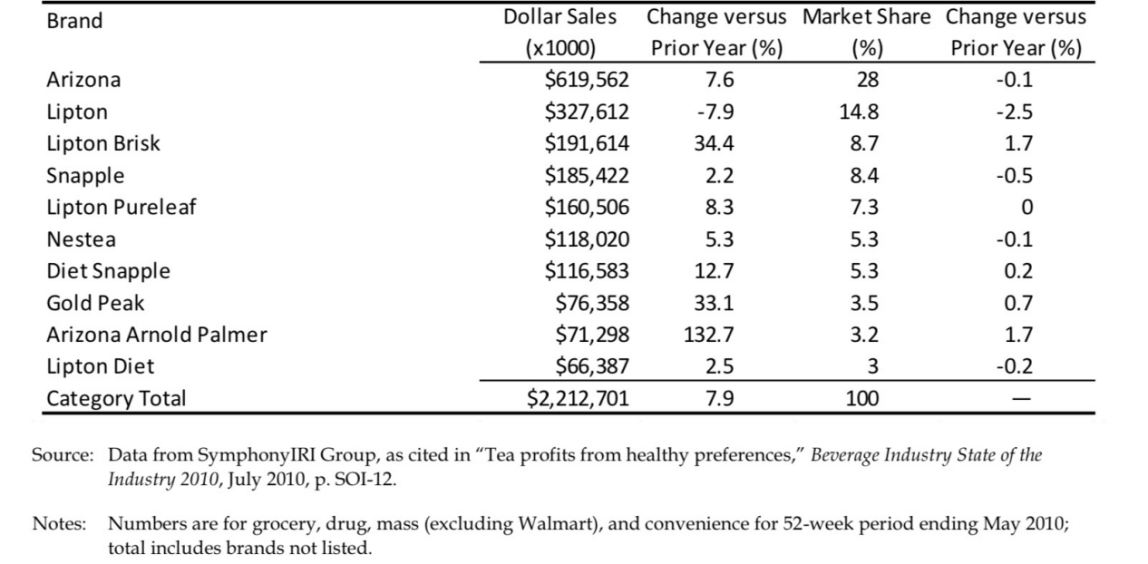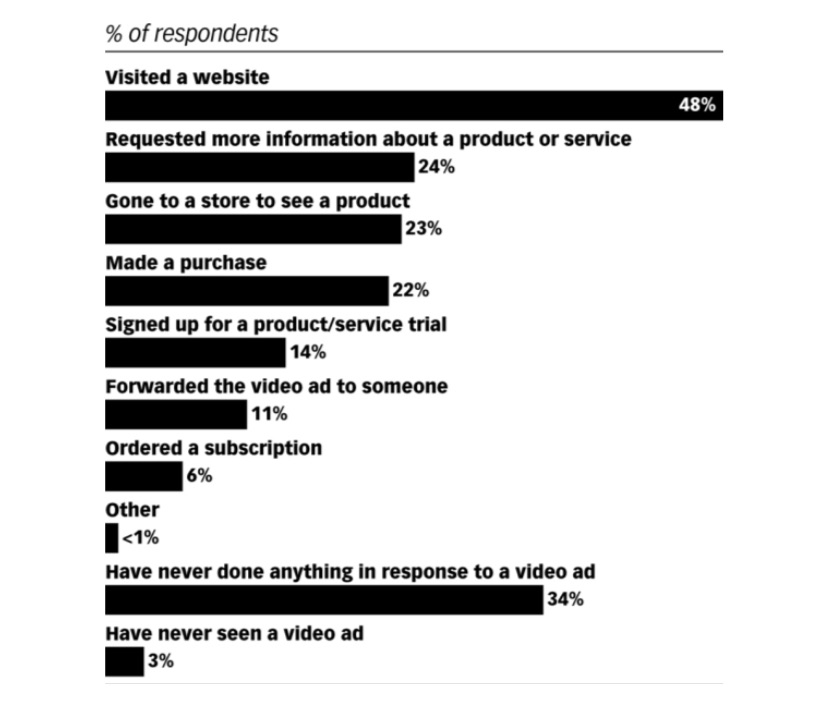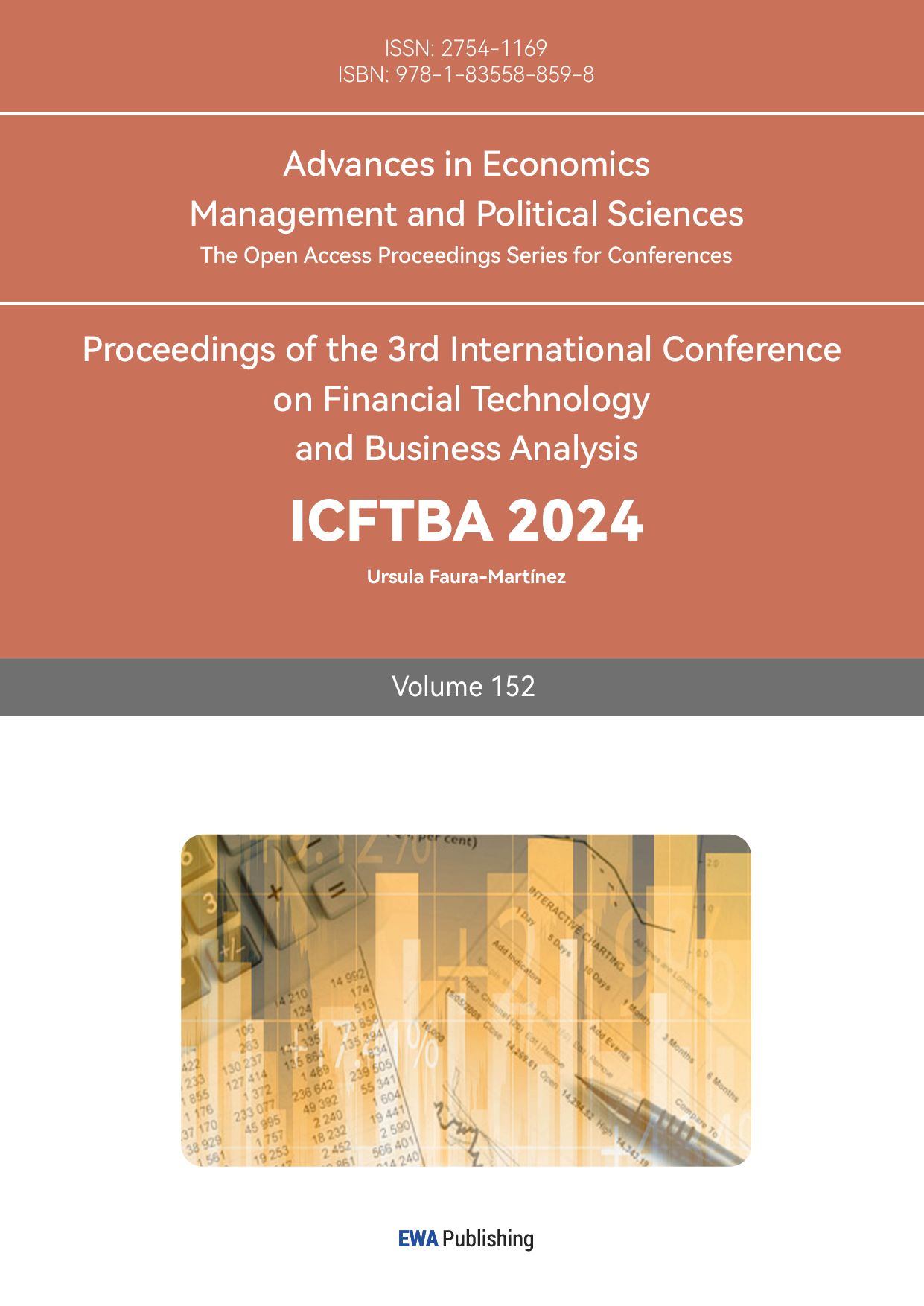1. Introduction
Marketing strategy is the overall vision and planning of the marketing development of a company for a certain period of time in order to achieve its business objectives, by persuading or attracting customers to buy its products or services in order to achieve an increase in sales and market reach. Marketing strategy determines the way in which a company reaches out to potential consumers and converts them into customers and mainly contains the company's value proposition, key brand messages, target customer demographics, and other advanced elements. Usually marketing strategies are categorized into two types, traditional communication methods and digital marketing strategies. Traditional marketing opts mainly for traditional communication methods in product or brand promotion and is also a strategy that does not involve digital or online media. The common ways are mainly TV, radio and prime time TV ads, etc. These are also considered as direct marketing. Whereas, the digital marketing strategy is specifically embodied in online marketing, which includes search engine marketing, social media marketing, viral advertising, and so on [1].
Lipton is a world-renowned tea brand owned by Unilever, which has been constantly adjusting its product marketing strategy according to market changes in order to cater to the preferences of consumers in different regions and the changing market trends. One of the representative products is Lipton Brisk, which adopts unique design to satisfy consumers' demand for the product and at the same time uses various marketing methods to promote the product, and each method achieves the goal of shaping consumers' perceptions and boosting sales [2].
Therefore, this paper will choose Lipton brisk as the representative brand of Lipton, analyze the effectiveness of different marketing strategies in the implementation of the effect of the manifestation of different marketing strategies, and at the same time explore the impact of different marketing strategies in the product market share, consumer acceptance and brand loyalty. Based on the results of the analysis, provide recommendations for effective marketing strategies for Lipton and other brands of the same or different nature.
2. Marketing strategies
Marketing strategy is to obtain the attention and purchasing power of customers through different means, and the target groups corresponding to different products are also different, so there are many different types of marketing strategies. Marketing strategies are mainly divided into two categories: traditional marketing strategies and digital marketing strategies; The biggest difference between the two marketing strategies is whether or not they use the Internet to disseminate product information [1].
2.1. The introduction of marketing strategies
Traditional marketing strategies predate digital marketing strategies, which do not use the Internet to disseminate and promote product information, but use the oldest methods, such as offline platforms such as print, radio, direct mail, and outdoor advertising. The most representative method of traditional marketing strategy is to use the PrimeTime period on TV to market to target customers
Although the digital marketing strategy is later than the traditional marketing strategy in time, its communication speed is not inferior to the traditional marketing method, and even in recent years, there is a trend of significantly exceeding the traditional marketing strategy, the digital marketing strategy is different from the traditional marketing strategy is that the former uses the network to disseminate and introduce product information, uses the network to attract target customer groups, and even enterprises can obtain customer orientation through the network platform and formulate relevant product information to promote to the target customer; The most common digital marketing strategy is viral advertisements [1].
2.2. The impact of product sales and branding
The relationship between product sales and brand promotion is very important, when the brand promotion and communication are successful, the product sales will also increase, because customers will accept the premium behavior of the product because of the brand image, the marketing strategy can establish brand awareness and influence, when more and more customers contact and understand the background of the product, this will greatly increase the sales of the product, and when the product is recognized by the customer, this will enhance the competitiveness and advantages of its product in the market, And it will lead to increased customer satisfaction and loyalty to their products, and customers will tend to choose products they are familiar with over unfamiliar ones [2].
3. Lipton brisk
Lipton Brisks, which was born out of the Pepsi-Lipton Tea Joint Venture (PLP) established in 1991, is a unique product within the Lipton Iced Tea portfolio that combines tea and carbonated beverages and is designed to attract the attention of health-conscious consumers and provide an alternative to carbonated soft drinks for this specific group of people.
Its emergence was the result of a partnership between PepsiCo and Lipton in response to the increasingly competitive beverage market of the 2010s, and was the beneficiary of a partnership between PepsiCo's distribution network and Lipton's strong reputation. PepsiCo has an extensive distribution network based on the global reach of its business, while Lipton has a long history of providing affordable, high quality tea to the public and has a strong reputation and brand image.
However, the ready-to-drink (RTD) tea market grew significantly in 2010, driven by health and wellness consumer trends. As one of the RTDs, iced tea is favored by younger consumers due to its caffeine content and refreshing taste. This makes young consumers the main target group of Lipton Brisks [3].
3.1. The product & target audience & product positioning
Lipton's product positioning focuses on young consumers, especially those between the ages of 18 and 35, including college students and white-collar workers, who are in a fast-paced lifestyle and at the same time are health-conscious and eager to relax. In addition, this demographic is often receptive to new ideas and can serve as opinion leaders, reaching a broader consumer base through word-of-mouth marketing. Among the middle and upper income groups, Lipton's products are primarily designed to provide a convenient and healthy tea experience to emphasize its image as a healthy tea brand.
Lipton brisk, on the other hand, has a brand image that embodies edginess and modernity, and its primary target audience is young adults, especially millennials looking for trendy beverage options. Lipton brisk's marketing strategy focuses on creating an attitude and lifestyle connection, rather than just emphasizing health benefits, and positioning the product as an integral part of a vibrant young lifestyle. Lipton brisk has positioned itself as a trendy product, with new and avant-garde design styles and concepts that have attracted many young people, the core concept of Lipton brisk is avant-garde [4].
3.2. Marketing approach and results
3.2.1. Sales
Lipton brisk ranked third in terms of sales of a range of beverages, and compared to other beverages, Lipton brisk's total sales volume ($191.614) was impressive. In terms of the percentage change from the previous year, Lipton brisk had a 34.4 percent change, which was not a big change, but compared to Arizona Arnold Palmer's 132.7 percent change, Lipton brisk's change was only a quarter, but Lipton brisk's net income was more than twice that of Arizona Arnold Palmer. In the other data in the table compared to last year, half of the data is negative, the other half is positive, in the positive number, Lipton brisk has a 1.7% change, compared to other products with positive changes, Lipton brisk ranks third in the overall sales volume, and Lipton brisk has the same change in Arizona Arnold palmer, Lipton brisk has demonstrated the strength and competitiveness of its brand sales (Figure 1) [3].

Figure 1: sales of a range of beverages
3.2.2. Marketing methods
The initial advertising efforts utilized creative animation and celebrity endorsements to showcase the transformative experience of enjoying light iced tea. Traditionally, Lipton has employed a variety of marketing techniques, including TV commercials, print ads, and in-store promotions. These methods play an important role in creating brand awareness: A TV commercial featuring Lipton brisks highlights its unique advantages, such as ease of use and superior taste. By utilizing engaging visuals and relevant narratives, these ads create a strong brand identity and create an emotional connection with potential customers. Magazines and newspapers often feature Lipton brisks for specific groups of people interested in health and wellness. Print media allows for detailed storytelling, reinforces product attributes, and educates consumers about the benefits of tea drinks. Figure 2 shows the cost of traditional marketing strategies for each beverage product, with Lipton brisk spending a total of $195,000 [4].

Figure 2: the cost of traditional marketing strategies for beverages
Brisk ranked third among ready-to-drink (RTD) tea brands, with a 34.4% increase in sales despite lower traditional media advertising compared to rivals Arizona and Lipton. Brisk has a market share of 8.7% and a market share of 12%. While Brisk has seen a surge in sales, the brand's social media presence has lagged behind, with competitors like Arizona and Snapple building stronger online followings. As part of its promotional plan, the brand is preparing to relaunch in early 2011, aiming to capitalize on the momentum generated by the Super Bowl ad. Through the spread of Superbowl and TV (CPM 34$), Lipton brisk's sales have increased Significantly. In August 2010, PepsiCo selected Mekanism as its agency for its Brisk campaign, Mekanism has a successful track record of viral advertising, with campaigns garnering millions of views with minimal paid media engagement. The agency's approach is centered on storytelling, creating engaging content that resonates with the target audience to facilitate sharing and discussion. This sets them apart from traditional advertising methods. They emphasize engagement, interaction, and content-driven strategies [5]. Figure 3 shows the customer's reaction after watching the video, 48% of people will choose to browse the website, 34% of people will choose to look for more information about the service and reviews of the product, 23% of people will choose to go to the store to search for the product, 22% will choose to buy the product, 25% will choose to continue to pay attention to the ad and subscribe, only 38% of people will choose to have no response or ignore the online advertisement, 62% of customers choose to learn about this product, which highlights the advantages of online advertising, which is more interactive with the target group than traditional marketing strategies [4].

Figure 3: the customer's reaction after watching the video
3.3. Optimization of marketing methods
Primetime TV advertisements can quickly reach a large audience, especially during peak viewing hours, and viewers' viewing habits allow the advertisements to reach a wide range of potential consumers. This wide coverage helps Lipton Brisk to increase brand awareness quickly.
Television advertisements are able to create a better brand image due to their prestige and credibility. Many consumers perceive TV ads as more authoritative, which helps to enhance Lipton Brisk's brand credibility and consumer trust [5].
The precision targeting capabilities of social media platforms allow Lipton Brisk to effectively reach core audiences based on demographic, interest and behavioral data. This precision marketing strategy improves the conversion rate of advertisements because it directly targets consumers who may be interested in the product. The interactive nature of social media advertising is another significant advantage; Lipton Brisk can interact with its customers through social media to gather feedback, enhance brand loyalty and promote word-of-mouth marketing.
By combining the broad reach of prime-time TV advertising with the precise interaction of social media advertising, Lipton Brisk can create a multi-channel marketing environment. This environment not only increases brand visibility, but also deepens relationships with consumers. Whereas TV advertising can be the primary channel for brand messaging, social media can be a complementary channel that extends the reach of that messaging through user-generated content and interactive campaigns [6].
Through social media platforms, Lipton Brisk can leverage user data to optimize its advertising strategy and ensure that content better resonates with its target audience. Viral marketing on social media increases social interactions with the brand, such as likes, comments and shares, which not only broadens the reach of the advertisement, but also increases brand exposure and awareness. By combining traditional TV advertising with digital social media advertising, Lipton Brisk can maximize its marketing effectiveness while increasing brand awareness and consumer engagement. This multi-channel marketing strategy helps Lipton Brisk stay ahead of the curve in a highly competitive market.
4. Conclusion
Lipton's marketing strategy for its innovative product, Lipton brisk, effectively blends traditional and digital marketing approaches to cater to the evolving preferences of health-conscious consumers, particularly millennials. By utilizing engaging television advertisements during Primetime, Lipton successfully enhances brand credibility and reaches a broad audience quickly. Complementing this with digital marketing efforts, such as social media campaigns and viral advertising, allows Lipton to engage with consumers on a more personal level, fostering relationships and driving brand loyalty.
The strategic focus on creating a modern, trendy image alongside its health-oriented messaging positions Lipton brisk as a preferred choice among young consumers. Analyzing market data reveals Lipton brisk's competitive performance in the ready-to-drink tea segment, despite facing stiff competition. The combination of compelling storytelling, celebrity endorsements, and visually appealing advertisements strengthens Lipton's market presence and consumer connection. Ultimately, Lipton's adaptive marketing strategy, through a harmonious blend of traditional and digital platforms, not only maximizes brand exposure but also enhances consumer engagement, driving product acceptance and sales growth in a competitive beverage market.
However, this paper only analyzes the brand based on currently available data, and does not quantify market research, and it only considers the impact of Lipton brisk's marketing strategy on the product and the company in this paper, with relatively few comparisons to other products.
References
[1]. Teixeira, T. S., & Caverly, A. (2012). Pepsi-Lipton Brisk. Harvard Business School Pub..
[2]. Xu, J. (2022, December). Research on Brisk’s Strategies of Choosing its Advertisement Mode. In 2022 4th International Conference on Economic Management and Cultural Industry (ICEMCI 2022) (pp. 1260-1266). Atlantis Press.
[3]. Calandro Jr, J. (2005). Super Cats as Altemative Investments.
[4]. Grohmann, B. (2009). Gender dimensions of brand personality. Journal of marketing research, 46(1), 105-119.
[5]. Han, Y. (2014). BRAND DEVELOPMENT IN CHINESE TEA MARKET: Case Company: Lipton.
[6]. OWENS, J. (2001). Digital@ JWT Unveils Online Promo for Lipton Brisk. Brandweek, 42(17), 32-32.
Cite this article
Li,Z. (2025). The Study of Marketing Methods on the Promotion of Lipton Brisk. Advances in Economics, Management and Political Sciences,152,48-53.
Data availability
The datasets used and/or analyzed during the current study will be available from the authors upon reasonable request.
Disclaimer/Publisher's Note
The statements, opinions and data contained in all publications are solely those of the individual author(s) and contributor(s) and not of EWA Publishing and/or the editor(s). EWA Publishing and/or the editor(s) disclaim responsibility for any injury to people or property resulting from any ideas, methods, instructions or products referred to in the content.
About volume
Volume title: Proceedings of the 3rd International Conference on Financial Technology and Business Analysis
© 2024 by the author(s). Licensee EWA Publishing, Oxford, UK. This article is an open access article distributed under the terms and
conditions of the Creative Commons Attribution (CC BY) license. Authors who
publish this series agree to the following terms:
1. Authors retain copyright and grant the series right of first publication with the work simultaneously licensed under a Creative Commons
Attribution License that allows others to share the work with an acknowledgment of the work's authorship and initial publication in this
series.
2. Authors are able to enter into separate, additional contractual arrangements for the non-exclusive distribution of the series's published
version of the work (e.g., post it to an institutional repository or publish it in a book), with an acknowledgment of its initial
publication in this series.
3. Authors are permitted and encouraged to post their work online (e.g., in institutional repositories or on their website) prior to and
during the submission process, as it can lead to productive exchanges, as well as earlier and greater citation of published work (See
Open access policy for details).
References
[1]. Teixeira, T. S., & Caverly, A. (2012). Pepsi-Lipton Brisk. Harvard Business School Pub..
[2]. Xu, J. (2022, December). Research on Brisk’s Strategies of Choosing its Advertisement Mode. In 2022 4th International Conference on Economic Management and Cultural Industry (ICEMCI 2022) (pp. 1260-1266). Atlantis Press.
[3]. Calandro Jr, J. (2005). Super Cats as Altemative Investments.
[4]. Grohmann, B. (2009). Gender dimensions of brand personality. Journal of marketing research, 46(1), 105-119.
[5]. Han, Y. (2014). BRAND DEVELOPMENT IN CHINESE TEA MARKET: Case Company: Lipton.
[6]. OWENS, J. (2001). Digital@ JWT Unveils Online Promo for Lipton Brisk. Brandweek, 42(17), 32-32.









